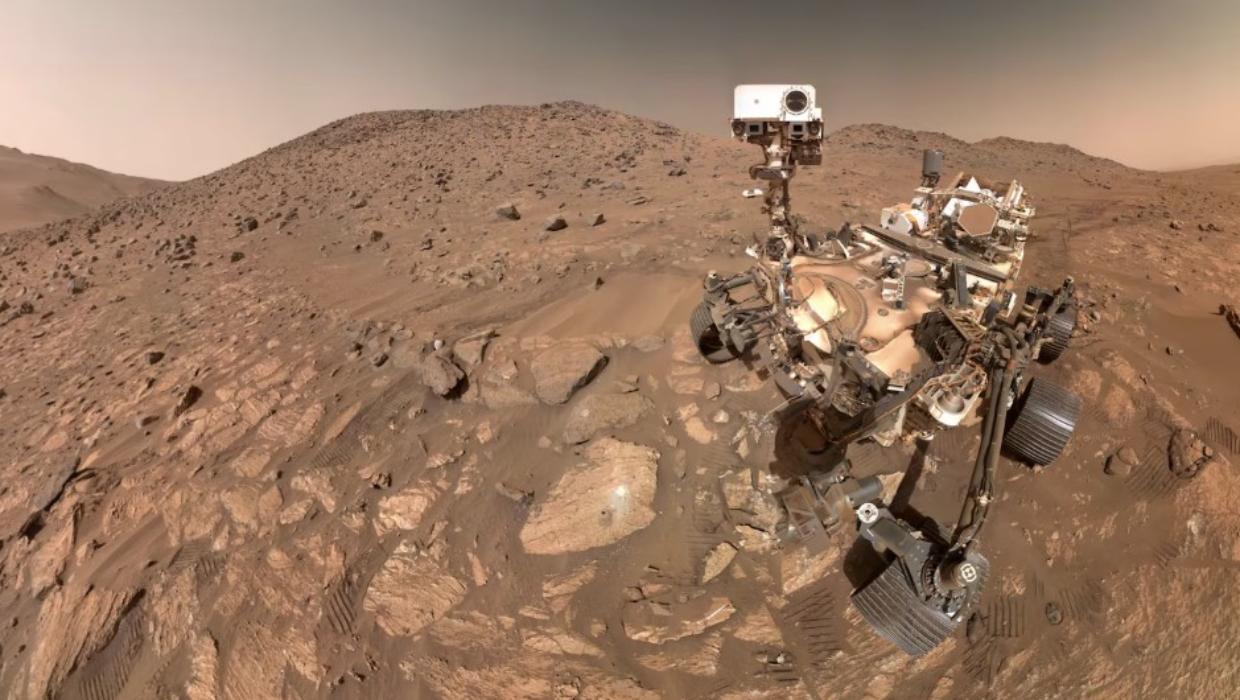Science
NASA Uncovers Potential Biosignature in Mars Rock Analysis

NASA has identified what it describes as the “clearest sign of life that we’ve ever found on Mars.” Detailed analysis of images taken by the Perseverance rover has revealed a potential biosignature in speckled rocks located on the Martian surface. This discovery adds to the ongoing exploration of the planet and raises intriguing questions about the possibility of life beyond Earth.
The findings come from the rover’s extensive study of rocks in the Jezero Crater, an area believed to have once contained water. The analysis focused on chemical compounds that could indicate biological activity. Scientists emphasize that while the evidence is compelling, further investigation is necessary to confirm the presence of life.
Details of the Discovery
Images captured by Perseverance show unique patterns on the rocks that may suggest biological processes. Researchers have been examining these images meticulously, looking for signs that could be linked to ancient microorganisms. According to reports from NASA, these patterns are unlike typical geological formations observed on Mars.
Dr. Ken Farley, a project scientist for the Perseverance mission, stated, “We are excited about these findings. They provide a new perspective on the potential for life on Mars and invite us to think about how to further explore these intriguing features.”
The analysis highlights specific minerals and organic compounds, which scientists believe could be remnants of past life forms. The ongoing study aims to determine whether these findings are indeed indicative of biotic processes or if they are the result of abiotic factors.
Implications for Future Mars Missions
This discovery has significant implications for future missions to Mars. Scientists are now more motivated than ever to continue exploring the planet’s surface and subsurface for additional biosignatures. The findings could influence the design of upcoming missions, including potential sample return missions that aim to bring Martian materials back to Earth for detailed analysis.
The Perseverance rover, which landed on Mars in February 2021, has been equipped with advanced tools designed for this kind of investigation. Its primary mission is to search for signs of ancient life and to collect rock and soil samples for future return missions.
As researchers continue to analyze the data collected, the scientific community remains hopeful about what these findings could mean for our understanding of life in the universe. The quest for extraterrestrial life is a complex and challenging endeavor, but discoveries like this one provide a tantalizing glimpse into the possibilities that lie ahead.
In conclusion, NASA’s identification of a potential biosignature on Mars marks a pivotal moment in the search for life beyond our planet. With ongoing analysis and future missions on the horizon, the quest to uncover the mysteries of Mars continues to captivate scientists and the public alike.
-

 World3 weeks ago
World3 weeks agoPrivate Funeral Held for Dean Field and His Three Children
-

 Top Stories3 weeks ago
Top Stories3 weeks agoFuneral Planned for Field Siblings After Tragic House Fire
-

 Sports3 months ago
Sports3 months agoNetball New Zealand Stands Down Dame Noeline Taurua for Series
-

 Entertainment3 months ago
Entertainment3 months agoTributes Pour In for Lachlan Rofe, Reality Star, Dead at 47
-

 Entertainment2 months ago
Entertainment2 months agoNew ‘Maverick’ Chaser Joins Beat the Chasers Season Finale
-

 Sports3 months ago
Sports3 months agoSilver Ferns Legend Laura Langman Criticizes Team’s Attitude
-

 Sports1 month ago
Sports1 month agoEli Katoa Rushed to Hospital After Sideline Incident During Match
-

 World4 weeks ago
World4 weeks agoInvestigation Underway in Tragic Sanson House Fire Involving Family
-

 Politics2 months ago
Politics2 months agoNetball NZ Calls for Respect Amid Dame Taurua’s Standoff
-

 Top Stories3 weeks ago
Top Stories3 weeks agoShock and Grief Follow Tragic Family Deaths in New Zealand
-

 Sports2 weeks ago
Sports2 weeks agoEli Katoa Shares Positive Recovery Update After Brain Surgery
-

 Entertainment6 days ago
Entertainment6 days agoJacinda Ardern Discusses Popularity Decline on Graham Norton Show





















